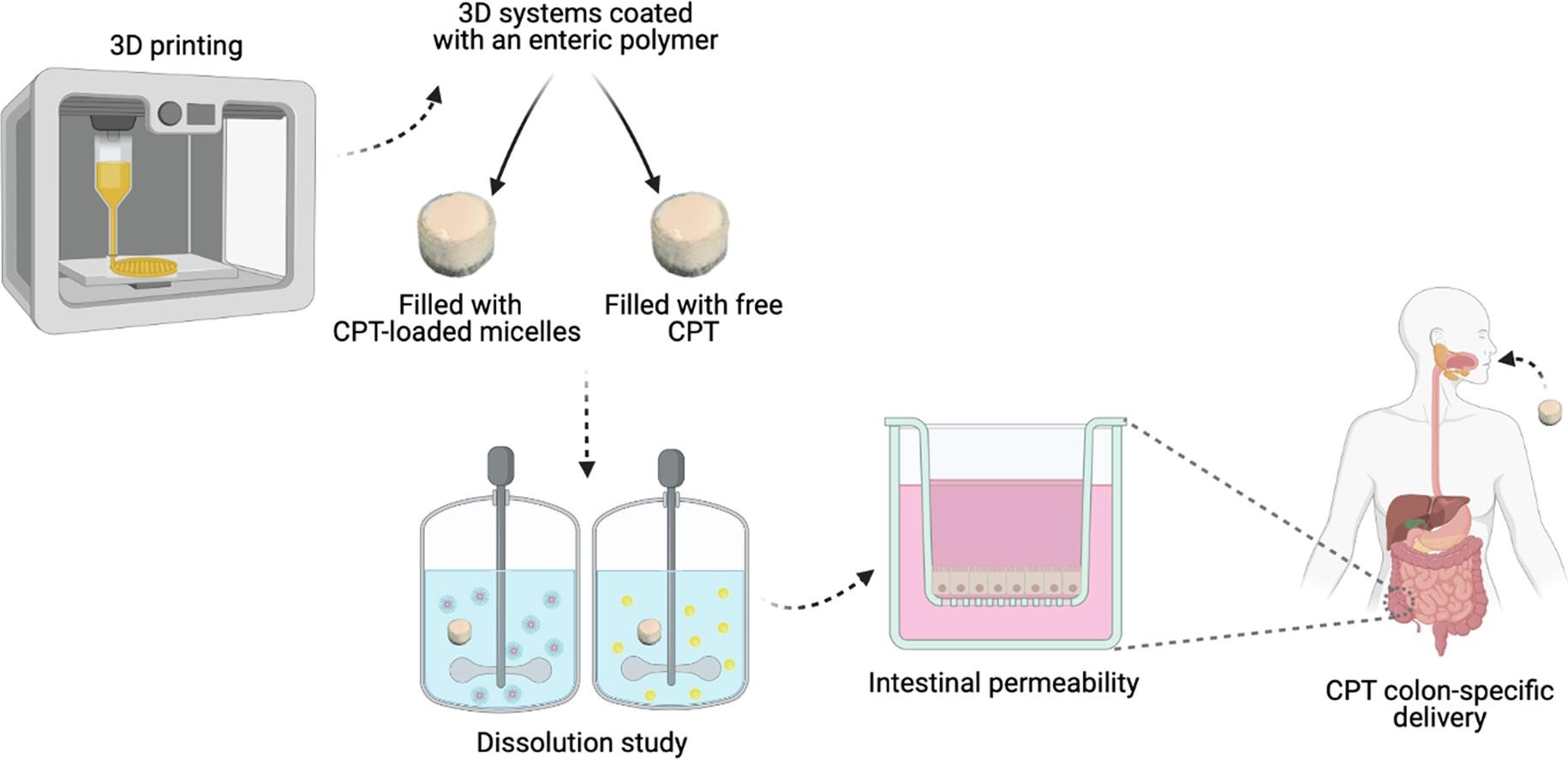
3D printed systems production:
Printfills (3D printed systems) were manufactured employing a bioprinter (Regemat 3D S.L., Spain) which combines FDM and IVF techniques. Two different batches of printfills were designed by the software Regemat 3D DESIGNER. First batch contained free CPT, whereas the second one CPT encapsulated within polymeric micelles.
Preparation of drug printable ink:
Suitable drug printable inks were prepared for each batch: Firstly, free CPT dissolved in DMSO with a concentration of 5 mg/mL was diluted in a dissolution of 10 mL DMSO: dH2O at a ratio of 7:3. Secondly, to obtain printable ink with lyophilized CPT loaded-micelles, 4.5 mL of dH2O were employed to rehydrate and resuspend the micelles. Both printable inks were prepared with the minimum light exposure to reduce the interaction with the drug.
3D printing process:
FDM starts the printing process building the scaffold in the platform by extruding 2 bottom solid layers. The extrusion continues with parallels lines separated by 1.8 mm and 2 mm for free CPT batches and CPT encapsulated, respectively. The next layer is built with perpendicular lines respect to the lower one, resulting in a quadrilateral mesh of 1.8 × 1.8 mm and 2 × 2 mm for each batch. This process continues until the18th layer of the scaffold when the two automated syringes of IVF inject inside the scaffold. The first syringe contained printable ink with the free CPT and injected 200 μL in the 18th layer in 4 different points of the mesh, whereas 12 injection points were necessary for micelles. Again, FDM continues extruding a couple of layers to finish the scaffolds. Finally, IVF with the second syringe injected the set volume of the delaying polymer in the last layer of the system sealing the top face of the printfill. All 3DP process from the FDM extrusion until the last injection of IVF was a continuous and automatic manufacturing. Once the printfills were finished, were dried in a drying oven (632 plus Nahita, Auxilab S.L., Navarra, Spain) at 29 ◦C for 24 h to evaporate the solvent.
Table 1 – FDM settings for batches with free CTP and CPT-loaded micelles.
| Layer thickness
(mm) |
Perimeter speed
(mm/s) |
Infill speed
(mm/s) |
Feeding rate
(mm/s) |
Height
(mm) |
Diameter
(mm) |
|
| Free CPT |
0.35 |
8 |
8 |
1.12 |
7.35 |
12 |
| CPT-loaded micelles |
0.35 |
8 |
8 |
1.12 |
8.35 |
13 |
Table 2 – IVF settings for every printable ink injected (free drug, delaying polymer, micelles) corresponding to both batches.
| Deposit speed
(µL/s) |
Retract speed
(µL/s) |
Purge
(µL) |
Volume
(µL) |
||
|
Free CPT |
Drug
|
7 | 1 | 0 | 200 |
| Eudaragit FS 30D
|
1 | 1 | 50 | 350 | |
|
CPT-loaded micelles |
Micelles
|
4 | 1 | 0 | 200 |
| Eudragit FS 30D
|
1 | 1 | 50 | 500 |
https://doi.org/10.1016/j.ejpb.2021.07.005
| Number | Category | Product | Amount |
|---|

